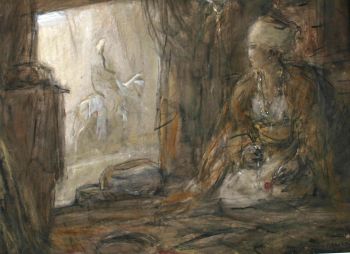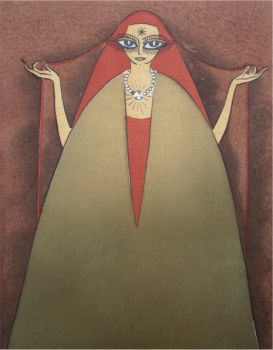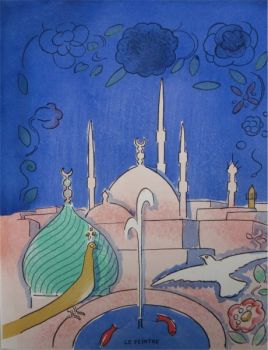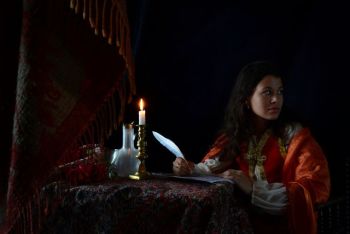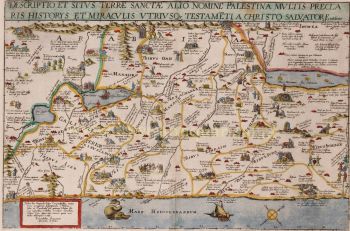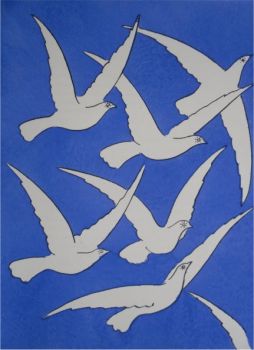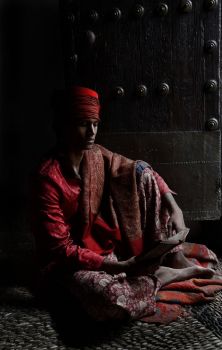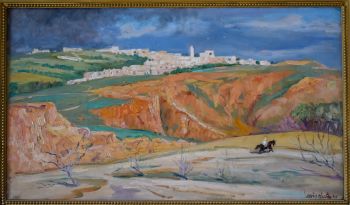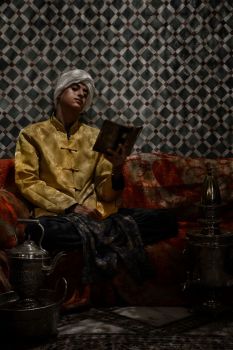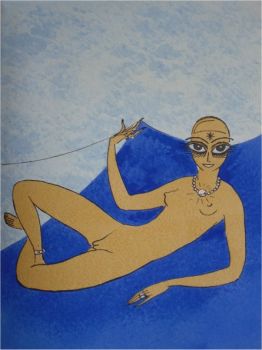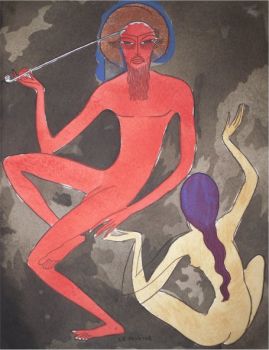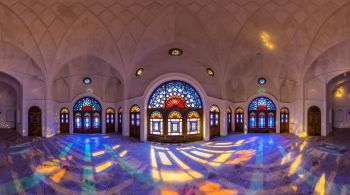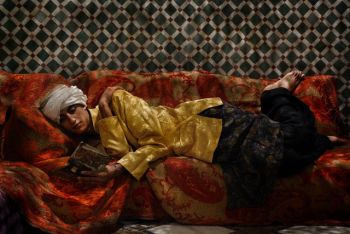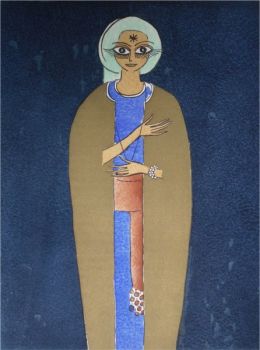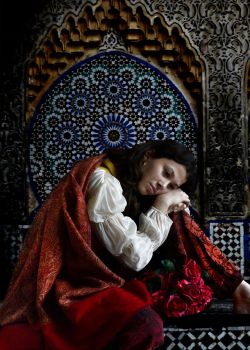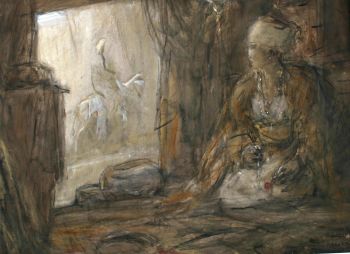Instructions for Carsten Niebuhr's expedition to Arabia 1774
Johann David Michaelis
Currently unavailable via Gallerease
- About the artworkRecueil de questions, proposées à une société de savants, qui par ordre de Sa Majesté Danoise font le voyage de l'Arabie.
Amsterdam, S.J. Baalde; Utrecht, J. van Schoonhoven & comp., 1774. 4to. Set in roman type with incidental Greek, Hebrew, Arabic, Syriac and 1 word in Coptic. Near-contemporary tanned sheepskin, gold-tooled spine.
Hans Bernhard Merian's French translation of Michaelis's Fragen an eine Gesellschaft gelehrter Männer (1762), prepared during the early stages of Carsten Niebuhr's Danish expedition to the Middle East. It is the first edition in any language to be printed in the Netherlands. Johann David Michaelis, a famed German Orientalist and theologian, was one of the scholars who prompted the important Danish expedition to Egypt, Arabia and Syria (1761-1767), led by Carsten Niebuhr. Michaelis hoped to investigate the relationship of the southern Arabic dialects to Hebrew, and to verify obscure botanical and zoological information in the Bible. For this purpose he composed the present 100 "questions". It includes the instructions for the expedition by Frederick V of Denmark, a 35-page account of Yemen and an extract of Carsten Niebuhr's account of Arabia (not included in the first French edition of 1763).
Back of first free endleaf with traces of removed bookseller's(?) ticket. With an occasional small rust spot, but otherwise in very good condition and only slightly trimmed, leaving large margins. Binding with minor suface damage and wear at the hinges and extremities, but otherwise also very good. Important preparatory studies concerning Egypt, Arabia and Syria, written and first published during the early stages of a voyage.
Chadenat 1933; Gay, Bibl. de l'Afrique en de l'Arabie 3366; STCN (3 copies); Macro, Bibliography of the Arabian Peninsula 1593. - About the artistJohann David Michaelis was a famed German Orientalist and theologian, was one of the scholars who prompted the important Danish expedition to Egypt, Arabia and Syria (1761-1767), led by Carsten Niebuhr. Michaelis hoped to investigate the relationship of the southern Arabic dialects to Hebrew, and to verify obscure botanical and zoological information in the Bible.
Michaelis was born in Halle an der Saale and was trained for academic life under his father's eye. At Halle he was influenced, especially in philosophy, by Siegmund J. Baumgarten (1706–1757), the link between the old Pietism and J. S. Semler, while he cultivated his strong taste for history under Chancellor Ludwig. In 1739-1740 he qualified as university lecturer. One of his dissertations was a defence of the antiquity and divine authority of the vowel points in Hebrew. His scholarship still moved along the old traditional lines, and he was also much exercised by certain religious scruples, with some seeing a conflict between his independent mind and that of submission to authority - encouraged by the Lutheranism in which he had been trained - which affected his reasoning.
A visit to England in 1741-1742 lifted him out of the narrow groove of his earlier education. In passing through the Netherlands he made the acquaintance of Albert Schultens, whose influence on his philological views became allpowerful a few years later. At Halle Michaelis felt himself out of place, and in 1745 he gladly accepted an invitation to Göttingen as Privatdozent. In 1746 he became professor extraordinarius, in 1750 ordinarius, and in Göttingen he remained till his death there in 1791.
Artwork details
Related artworks
Engelbert Kaempfer
ENGELBERT KAEMPFER BOOK1651 - 1716
Price on requestZebregs & Röell - Fine Art - Antiques
Antonie Derkinderen
Memory book Exhibition of Dutch Painting1892
Price on requestKunsthandel Pygmalion
Tilmanus Nicolaus Maastricht
Missale Romanum with Dutch silver mounts1788 - 1792
Price on requestJacob J. Roosjen SRI
LAWRENCE WEINER
"SKIMMING THE WATER [MENAGE A QUATRE]" Signed book plus small artwork2010 - 2014
Price on requestGallerease Selected
Tilmanus Nicolaus Maastricht
Missale Romanum with Dutch silver mounts1788 - 1792
Price on requestJacob J. Roosjen SRI
Engelbert Kaempfer
ENGELBERT KAEMPFER BOOK1651 - 1716
Price on requestZebregs & Röell - Fine Art - Antiques
Yoko Ono
YOKO ONO: "ARISING" SIGNED BOOK PLUS SMALL ARTWORK 2010 - 2014
Price on requestGallerease Selected
Antonie Derkinderen
Memory book Exhibition of Dutch Painting1892
Price on requestKunsthandel Pygmalion
Hermann Nitsch
"UNDER MY SKIN" Signed book incl. small artwork and DVD in a matching box2010 - 2014
Price on requestGallerease Selected
1 - 4 / 22Elisabeth Treskow
Afghan lapis lazuli inlaid with gold on a silver stand1950 - 1960
Price on requestJacob J. Roosjen SRI
Unknown artist
IMPORTANT AND RARE LARGE INDIAN 'COMPANY STYLE' PAINTING ON IVORY DEPICTING A PARADE1850 - 1900
Price on requestZebregs & Röell - Fine Art - Antiques
 Curated by
Curated byDanny Bree
1 - 4 / 24

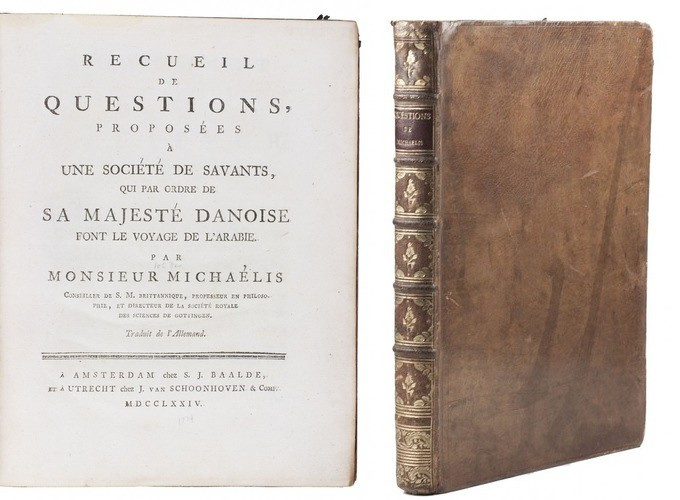










!["SKIMMING THE WATER [MENAGE A QUATRE]" Signed book plus small artwork by LAWRENCE WEINER](https://media-2.gallerease.com/images/442bfd5f-fc31-4e18-a2fa-ee0c08eade64/350x350/skimming-the-water-menage-a-quatre-signed-book-plus-small-artwork.jpg)









